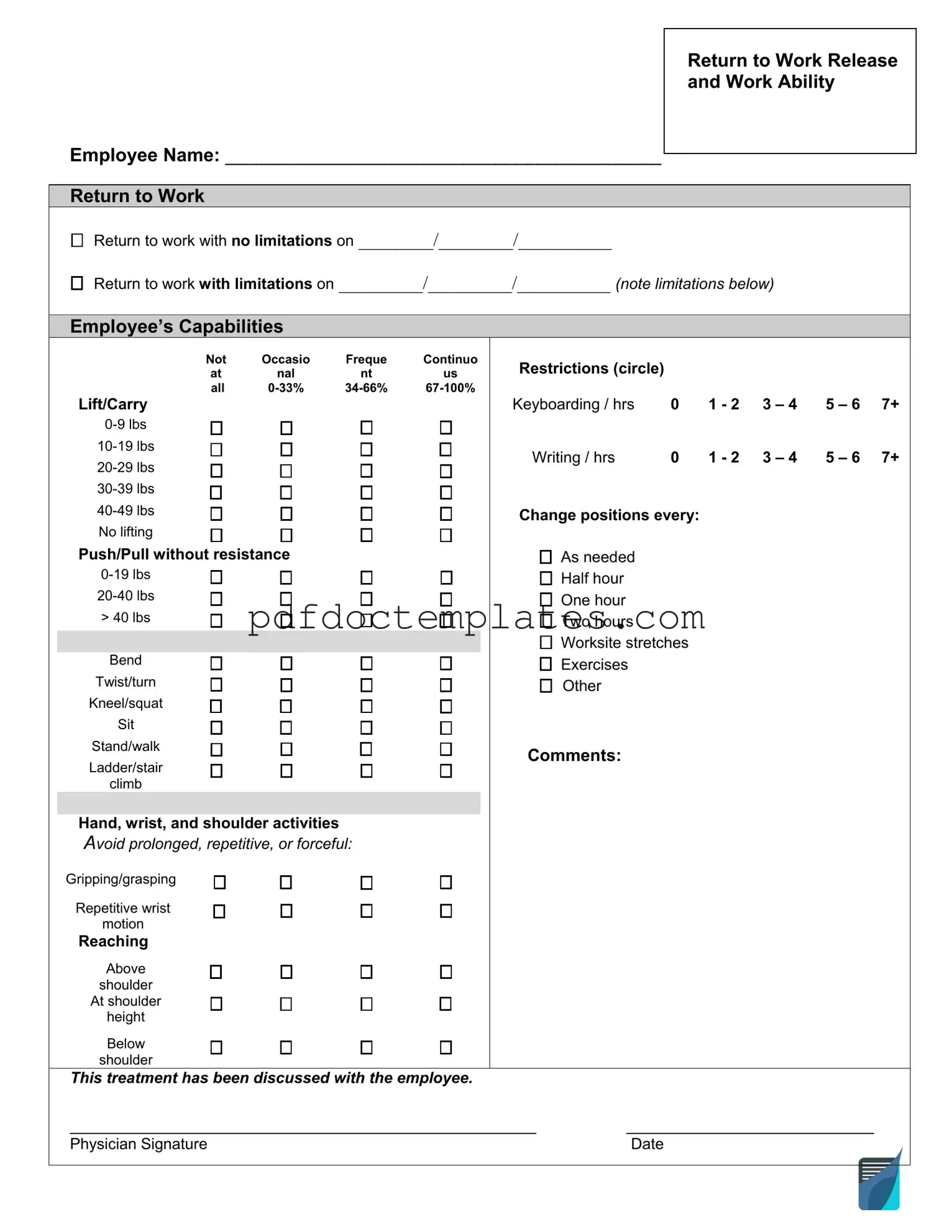Download Work Release Template
The Work Release form is a legal document that allows individuals to leave a correctional facility temporarily for employment purposes. This form helps bridge the gap between incarceration and reintegration into the community by enabling individuals to gain work experience and earn an income. If you're ready to take the next step, fill out the form by clicking the button below.
Access Your Document

